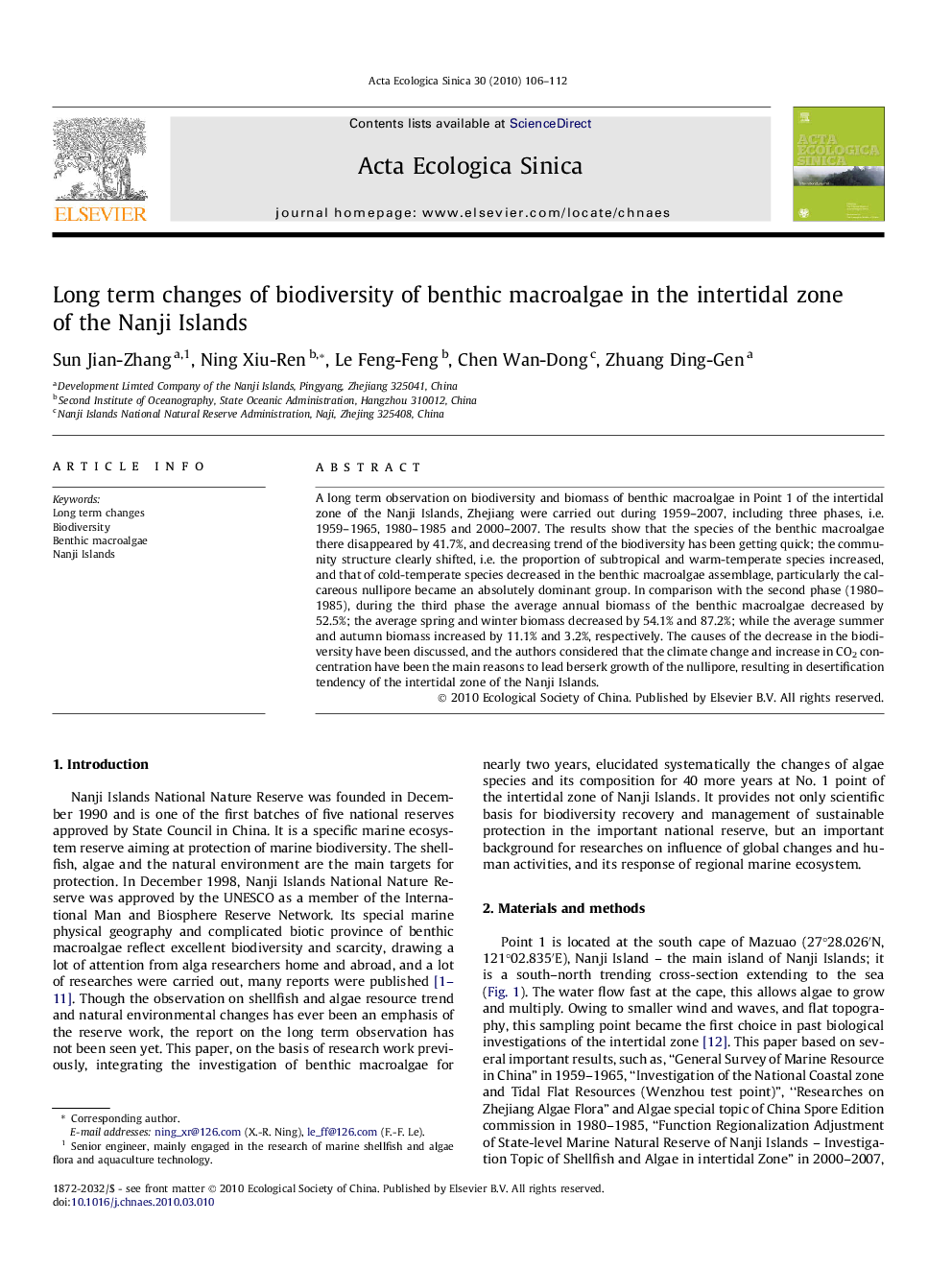| Article ID | Journal | Published Year | Pages | File Type |
|---|---|---|---|---|
| 4380257 | Acta Ecologica Sinica | 2010 | 7 Pages |
Abstract
A long term observation on biodiversity and biomass of benthic macroalgae in Point 1 of the intertidal zone of the Nanji Islands, Zhejiang were carried out during 1959-2007, including three phases, i.e. 1959-1965, 1980-1985 and 2000-2007. The results show that the species of the benthic macroalgae there disappeared by 41.7%, and decreasing trend of the biodiversity has been getting quick; the community structure clearly shifted, i.e. the proportion of subtropical and warm-temperate species increased, and that of cold-temperate species decreased in the benthic macroalgae assemblage, particularly the calcareous nullipore became an absolutely dominant group. In comparison with the second phase (1980-1985), during the third phase the average annual biomass of the benthic macroalgae decreased by 52.5%; the average spring and winter biomass decreased by 54.1% and 87.2%; while the average summer and autumn biomass increased by 11.1% and 3.2%, respectively. The causes of the decrease in the biodiversity have been discussed, and the authors considered that the climate change and increase in CO2 concentration have been the main reasons to lead berserk growth of the nullipore, resulting in desertification tendency of the intertidal zone of the Nanji Islands.
Keywords
Related Topics
Life Sciences
Agricultural and Biological Sciences
Ecology, Evolution, Behavior and Systematics
Authors
Sun Jian-Zhang, Ning Xiu-Ren, Le Feng-Feng, Chen Wan-Dong, Zhuang Ding-Gen,
